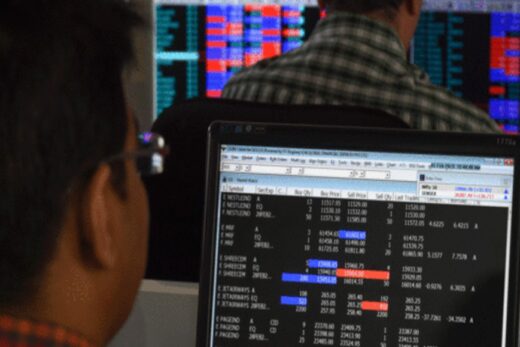NSE’s online trading was a revolution that brought Indian stock market on a single order book, and marked the beginning of the end of bellowing traders on the famed trading ring of the Phiroze Jeejeebhoy Towers of the Bombay Stock Exchange.
“The success of NSE was the first major achievement in the history of stock exchanges in the world and was the harbinger of taking IT to the next level. The NYSE, Nasdaq and other exchanges followed suit,” Ashish Chauhan, the current head of the BSE, Asia’s oldest stock exchange, and one of the key brains behind the setting up of NSE, says in his memoir Stithapragya, which was released on Tuesday.
The setting up of India’s first national online stock exchange represents one of the biggest success stories of India after 1991 economic reforms. It was the earliest glimpse of the latent abilities of Indian engineers and technologists, who later went on to transform some of the biggest companies across the world.
The story of the first-ever equity trading on the swanky new trading system of the NSE’s NEAT is one of irony, humour and generosity.
Here’s how Chauhan recalls it in his 164-page memoir written by famed filmmaker and ad-man Mayoor Shah:
On the first day (November 3, 1994), there was great excitement among the people who were available. Each one wanted to be the first to trade. Among them was a young trader, Santosh Biyani, who in his over-enthusiasm, traded in Reliance shares, but by mistake punched in Rs 100 above the market price. Within minutes, he faced a huge loss.
Now, this was an online trade, unlike the conventional trading floor, where you can see the person whom you trade with. Santosh panicked and came running to us, as we were trading from the NSE office itself. We sympathized with him, as it was a genuine mistake. But the challenge on the new platform was that we didn’t know the buyer!
With great efforts, we went into the back-end and traced the buyer, a large and reputed house, whom we pleaded with and who gracefully reversed the transaction. Khandwala Securities, who were trading from their office, agreed to let go of a huge profit on the first trade!
While the nugget reflects the humour and generosity of the earliest moments of one of the defining days in India’s stock market history, the irony of the incident was not lost on Chauhan.
“He was fortunate to get back his money, but this was an unforgettable incident for us, because we were made to trace someone on a platform where buyers and sellers are unknown and faceless,” Chauhan recalls.
The man, who was in the thick of things during the fledgling days of NSE, also narrates how NSE witnessed instant success soon after its launch. The infant stock exchange took just over 11 months to equal the daily turnover of the more-than-century-old BSE.
But, even this pace of growth was not up to Chauhan’s expectations, as the initial few months at NSE were at best a walk instead of the sprint it is now known for.
“For the first few months, the trading was not as much as we had envisaged, thankfully the much-needed boost came from another source,” Chauhan said.
NSE got a big break in the closing months of 1995, because of one of the lowest moments in Indian capital market history that involved Reliance Industries.
During that time, trading in RIL’s shares accounted for roughly 15 per cent of the total turnover on BSE. However, in late 1995 BSE decided to suspend trading in
shares for three days on the charge of issuing duplicate shares to investors that had identical numbers.
RIL defended itself vigorously against the charge, and threatened to delist its shares and those of few other group companies from the exchange.
RIL then decided to ditch BSE and list its shares on rival NSE. Eventually, RIL was persuaded by the directors of BSE and the government to drop its threat of delisting.
“This became a turning point for NSE. Within a few months, 80,000 transactions per day took place only in Reliance companies. Volumes galloped multi-fold,” he recalls.
Chauhan ended up quitting NSE around the time its first Managing Director Dr R.H. Patil decided to retire and eventually, joined RIL’s fledgling telecom venture Reliance Communications.
Today, Chauhan sits at the helm of BSE trying to spur growth in the over a century-old leviathan and jostle with the giant he once helped create.



